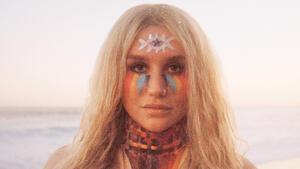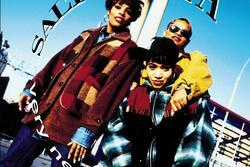The Anthem I Needed
Image of Kesha, as featured on Variety.com, image courtesy of RCA Records.
I’ve long been a Kesha stan. When her album, “Animal”, came out in 2010, the singer’s wild “I don’t give a F—k” party vibe was just my 24-year-old speed. Her music normalized healthy sexuality for young women, promoted love and good times, and was drenched in a semi-trashy pop explosion. Divine. I even saw her live in Raleigh, NC and she exited the show on a glitter cannon. I mean, come on.
Amidst all the glitter and alcohol, I knew Kesha was an actual talent. A friend directed me toward an NPR interview in which she talked about her deep love of Bob Dylan, the fact that she does most of her own songwriting, and her deeply artistic spirit. I was smitten.
And then, after the 2012 release of “Warrior,” we stopped hearing from her for a while. We now know she became embroiled in an ugly legal battle with her producer, Dr. Luke, who is accused of physically, sexually, and emotionally abusing her, and Sony Production Company (her music label). In the midst of the lawsuits and appeals and stress, she stopped making music.
I’m not here to analyze the legal arguments or discuss the injunctions or the f—d-up power dynamics at play here; because just a few weeks ago Kesha emerged like a phoenix from the glittery ashes with her powerful, poignant, sob-inducing song “Praying,” complete with a powerful music video. Besides the stunning visual imagery of color and beauty against a desert background, the song itself showcases Kesha’s incredible vocal ability in a way we have not heard before. It’s like she is giving us her full self; she is still glittery and edgy while powerful and in her own identity, and she is no longer controlled by another’s vision of who she should be.
Most importantly, with “Praying,” Kesha created an anthem for me, one I did not know I needed. It’s been nineteen years since I was sexually assaulted, and I’m pretty open about my survivor status. I spoke at Take Back the Night in college, I’ve shared my story in front of groups of teens, I’ve clocked quite a few therapeutic hours unpacking what happened to me. I do this work because every now and again, the anger pops up––the anger at someone violating my trust, my naivete––and I need an outlet. In the past, that outlet may have been self-destructive tendencies, but the release of “Praying” has coincided with a moment in my life when I am trying to figure out how to REALLY practice self-love and kindness with myself. To forgive myself when I make mistakes, and to step out of living in constant guilt and shame.
Kesha’s passionate, loud, beautiful exhale in “Praying” is the cathartic moment I now realize I still needed. Every time I listen or watch, I get chills. Her pain is all of our pain; she is standing in the desert and screaming into the abyss for all of us survivors, smashing TVs to exercise our anger, breaking free of netting to help us remember our power. Because wow, do survivors have power.
“And you said that I was done/but you were wrong and now the best is yet to come”
She sings because our attackers are trying to take away our ability to own our future, but Kesha, and I, have come out on the other side ready to create, to change, to influence, and to simply be. That’s our greatest grown-up rebellion: existing and owning our strength. These are underreported, underrepresented, underbelieved crimes, and here she is singing our stories loud and proud. YES.
I’m thankful for this anthem, to help on the days when existing is a little harder than usual. With my assault so far behind me, it It is a lot easier for me now. But survivor status is never erased; my cracks and bruises are part of who I am, now and always. That is the reality that “Praying” captures: you live with the scars but learn to make them part of the screwed-up beautiful person you become. And, you rise again.
(Also, thank goodness, the full “Rainbow” album is now available for purchase. It is a triumph.)






